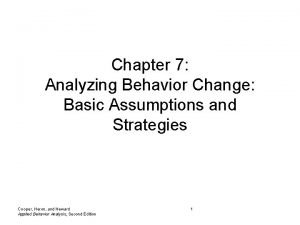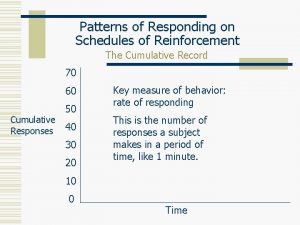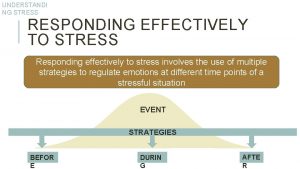Responding to the environment Responding to the environment














- Slides: 14

Responding to the environment

Responding to the environment Organisms have receptors to detect environmental stimuli.

Responding to the environment Organisms have receptors to detect environmental stimuli. Receptors can range from simple nerve endings to specialised sensory cells to complex sense organs.

Responding to the environment Organisms have receptors to detect environmental stimuli. Receptors can range from simple nerve endings to specialised sensory cells to complex sense organs. Most receptors are specialised for the detection of a particular kind of stimulus: - Photoreceptors = found in retina. ‘See’ light.

Responding to the environment Organisms have receptors to detect environmental stimuli. Receptors can range from simple nerve endings to specialised sensory cells to complex sense organs. Most receptors are specialised for the detection of a particular kind of stimulus: - Photoreceptors = found in retina. ‘See’ light. - Chemoreceptors = detect chemicals. Smell, taste.

Responding to the environment Organisms have receptors to detect environmental stimuli. Receptors can range from simple nerve endings to specialised sensory cells to complex sense organs. Most receptors are specialised for the detection of a particular kind of stimulus: - Photoreceptors = found in retina. ‘See’ light. - Chemoreceptors = detect chemicals. Smell, taste. - Mechanoreceptors = in cochlea of the ear. Detect sound wave vibrations. Hearing.

Responding to the environment In animals, receptors send messages along nerves – electrical signal called nerve impulse to CNS (central nervous system).

Responding to the environment In animals, receptors send messages along nerves – electrical signal called nerve impulse to CNS (central nerve system). In complex animals the CNS involves a brain where info is processed.

Responding to the environment In animals, receptors send messages along nerves – electrical signal called nerve impulse to CNS (central nerve system). In complex animals the CNS involves a brain where info is processed. Nerve impulses are sent from the brain to effectors (usually muscles or glands but also include cilia/flagella and chromatophores – cells which change colour)

Responding to the environment In animals, receptors send messages along nerves – electrical signal called nerve impulse to CNS (central nerve system). In complex animals the CNS involves a brain where info is processed. Nerve impulses are sent from the brain to effectors (usually muscles or glands but also include cilia/flagella and chromatophores – cells which change colour) The effectors then produce a response/behaviour.

Responding to the environment In animals, receptors send messages along nerves – electrical signal called nerve impulse to CNS (central nerve system). In complex animals the CNS involves a brain where info is processed. Nerve impulses are sent from the brain to effectors (usually muscles or glands but also include cilia/flagella and chromatophores – cells which change colour) The effectors then produce a response/behaviour. Muscles, cilia and flagella cause movement and glands manufacture and secrete substances.

Responding to the environment In animals, receptors send messages along nerves – electrical signal called nerve impulse to CNS (central nerve system). In complex animals the CNS involves a brain where info is processed. Nerve impulses are sent from the brain to effectors (usually muscles or glands but also include cilia/flagella and chromatophores – cells which change colour) The effectors then produce a response/behaviour. Muscles, cilia and flagella cause movement and glands manufacture and secrete substances. A complex brain allows animals to perceive patterns of stimuli which are interpreted – eg shape and texture of a surface, song of a bird.

Examples Bats detect sound frequency much higher than human range and whales can hear sound frequency much lower.

Examples Bats detect sound frequency much higher than human range and whales can hear sound frequency much lower. White cabbage butterflies look the same to us, but females reflect UV light which the males can see. https: //www. youtube. com/watch? v=b. G 2 y 8 d. G 2 QIM
 Responding to the marketing environment
Responding to the marketing environment Chapter 3 analyzing the marketing environment
Chapter 3 analyzing the marketing environment Responding to the environment
Responding to the environment Natural environment marketing
Natural environment marketing Financial environment of business
Financial environment of business Ubrs training
Ubrs training Affirmation of the consequent aba
Affirmation of the consequent aba How to respond to instructions
How to respond to instructions Scalloped pattern of responding
Scalloped pattern of responding Manipulated and responding variables examples
Manipulated and responding variables examples Pulmonary score
Pulmonary score Attending responding personalizing initiating
Attending responding personalizing initiating Congratulations dialogue
Congratulations dialogue _____ is done with the first responding officer.
_____ is done with the first responding officer. Responding to internal stimuli
Responding to internal stimuli



























